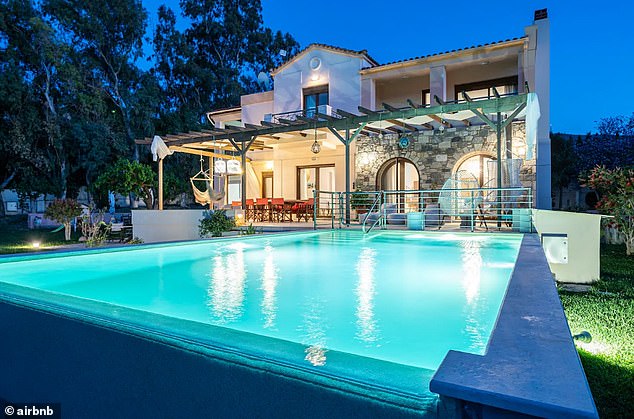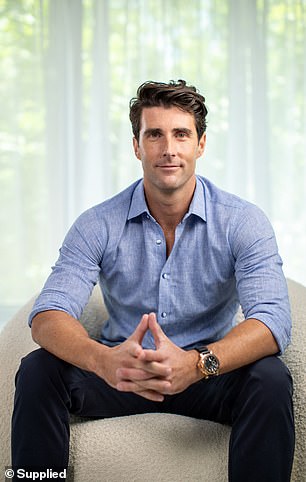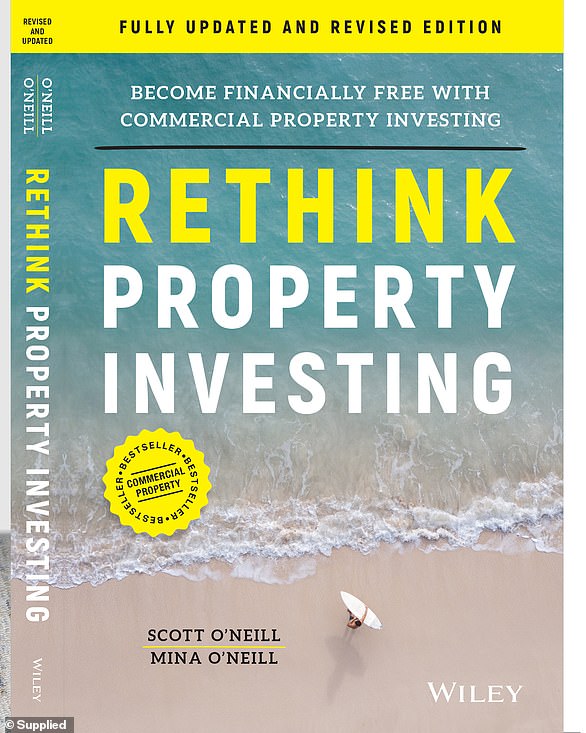A property investor with a staggering $85 million portfolio says landlords should not be blamed for rising rents across Australia.
Pictured: Real estate investor Scott O’Neill
Scott O’Neill, 28, is the chief executive of Rethink Investing in Sydney’s eastern suburbs.
The father of two has worked tirelessly with his wife Mina for over a decade building their portfolio of residential and commercial properties.
Mr O’Neill said he could understand why landlords were being blamed for the rental crisis, but said a lack of housing supply was at the heart of the problem.
‘I understand why people would be frustrated. “Our first article in the media was in 2016 and I received death threats, people told me that I was the reason they couldn’t afford the houses where they live, that I was a capitalist pig,” he said.
‘Nothing changes, it’s the same every year. It will be here in 10 years. It’s just a natural human response, people need a scapegoat.
“And real estate investors are often a scapegoat.”
O’Neill said some investors were greedy and did not do right by their tenants, while others subsidized rent for long-term tenants.
He blamed the large amount of red tape preventing the construction of rental properties for the anti-landlord sentiment rife in Australia.
“There’s a reason the market is so tight: this year we have 600,000 more people in this country than last year,” he explained.
“These are the big problems and a landowner who simply owns a property is not the scapegoat, it’s just the infrastructure.”
O’Neill also shared his gloomy predictions for the future of the rental market.
‘Rents will continue to rise, prices will continue to rise. “Over time, rates will go down and prices will go up even more,” he stated.
“The government has to create supply as soon as possible and, if it doesn’t, there will surely be tenants for life.”
How Scott brought his first property
O’Neill said he had prioritized work for most of his twenties, sometimes skipping classes to earn his engineering degree to pick up an extra shift.
“I worked at McDonald’s, I cleaned cars on the weekends and did professional cleaning, I did multiple jobs while studying,” he said.
‘I have been a waiter, I deliver poker machines and I was always working. Over the years you may only be saving a few hundred a week, but it adds up.
‘I was 23 when I bought my first property and it came with a minimum deposit required, so I took out a 90 per cent loan. At that time there was a saving on stamp duty.
‘This allowed us to enter the real estate market with $60,000 in cash at the time. And you have to remember that $60,000 in 2010 would be almost like $100,000 now.”

Couple Scott and Mina O’Neill (pictured) have built a property portfolio worth $85 million.

Pictured is one of O’Neill’s properties, a sprawling seven-bedroom house on a Greek island.
O’Neill said the stressful thing about making that first investment was making sure you could cover the interest.
“Saving was the monotonous, slow, boring part that took years, and to be honest, I felt like the market was always ahead of me,” he said.
“But we finally got there and it was a stretch, and it was the most stressful purchase I’ve ever made by an absolute mile. The first one is always the worst.
‘The first house had a granny flat, so I had two incomes, so it was a little better than if it were a standard house.
“We still hold that property today and it has more than tripled in value.”
Scott’s message to young Australians trying to get on the property ladder and why boomers are wrong
O’Neill is confident home ownership is still possible for young Australians, as long as they can build capital, are “location agnostic” and do their research.
“You don’t have to live in the house if it’s an investment property,” he said.
‘You’re not going to buy Commonwealth Bank shares just because their head office is close to you, so you can walk by there every day.
‘If you’re a pure investor, go where the good deals are and that might take you a little further. But you’ll get a bigger house with better performance, and that will help maintain its long-term serviceability.’
He said it was a “fact” that it was harder to buy a house now than it was 10 years ago.
‘Any baby boomer who says “Young people don’t work hard”, look at the math, the average income to the average house price is much further apart than it used to be.
‘I see it almost daily where I have younger clients buying homes in different parts of the country, you know, homes under $600,000.
“The places I see under $600,000 could be north and south of Perth, you can also go to regional Queensland, places like Cairns, Ipswich, Townsville.
“If you want to stay in New South Wales, you might have to look at units.”

The real estate power couple has spent more than a decade building this impressive portfolio. Scott said he researches and buys the properties and Mina manages them.


